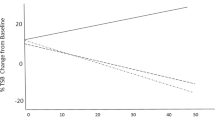Abstract
Herbal treatment of neonatal jaundice (NNJ) has been practiced in China for a long time. Even to-date, a variety of herbal items, including “Yin-chin” (Artemisia), “Huang-qin” (Scutellaria), “Da-huang” (Rheum officinale), “Gan-cao” (Glycyrrhiza), and “Huang-lin” (Coptis chinesis), are still being prescribed to jaundiced infants, often in combination with modern treatment such as phototherapy and exchange transfusion. Their efficacy has, however, not been tested by properly conducted randomised controlled trial. On the other hand, exposure to herbs either before or after birth has been suspected to be a cause of hemolysis and jaundice in the newborns. It is also widely believed in the Chinese community that a number of herbal items are hemolytic agents in infants deficient in the enzyme glucose-6-phosphate dehydrogenase (G6PD). The belief is so deep rooted that each infant detected to have G6PD deficiency by neonatal cord blood screening is given a G6PD deficiency alert card, which states that the child must avoid these herb items for life. In a cohort of 1008 mother–infant pairs, however, we have previously shown that there was no association between maternal herb consumption during pregnancy and the incidence or severity of neonatal hyperbilirubinemia in their offsprings, including those who were deficient in G6PD. A thorough search of medical literature also fails to detect any evidence that any of the herbs stated in the G6PD deficiency alert card causes hemolysis in G6PD-deficient subjects. Thus, there are many misunderstandings and unsubstantiated beliefs about the relationship between herbal medicine and NNJ. Given the potential usefulness of Chinese traditional medicine, which has been practiced for almost 3000 years and is still gaining momentum in the modern days, extensive scientific studies to determine the therapeutic efficacy and potential harmful effects of the various herbal items are warranted.
This is a preview of subscription content, access via your institution
Access options
Subscribe to this journal
Receive 12 print issues and online access
$259.00 per year
only $21.58 per issue
Buy this article
- Purchase on Springer Link
- Instant access to full article PDF
Prices may be subject to local taxes which are calculated during checkout
Similar content being viewed by others
References
Fok TF, Lau SP, Hui CW Neonatal jaundice — its prevalence in Chinese infants and associating factors Aust Paediatr J 1986 22 215–9
Wong HB Singapore kernicterus Singapore Med J 1980 21 556–67
Fok TF, Lau SP, Hui CW Chinese herbs in pregnancy and neonatal jaundice Hong Kong J Pediatr 1985 2 138–44
Ho NK Traditional Chinese medicine and treatment of neonatal jaundice Singapore Med J 1996 37 (6) 645–51
Nagy JG Antibacterial action of essential oils of Artemisia as an ecological factor: I. Antibacterial action of the volatile oils of Artemisia tridentata and Artemisia nova on aerobic bacteria Appl Microbiol 1967 15 819–21
Chang WH In vitro antibacterial activity of some common Chinese herbs on Gram-positive aerobic bacteria Chin Med J 1949 67 648–56
Chen HY Artemisia composita for the prevention and treatment of neonatal haemolysis and hyperbilirubinemia J Trad Chin Med 1987 7 105–8
Deng WL Sankezhen In: Chang HM, But PPH, editors Pharmacology and Applications of Chinese Materia Medic Philadelphia: World Scientific Publishing 1986 p. 62–71
Kraus SD Glycyrrhetinic acid — a triterpene with anti-oestrogenic and anti-inflammatory activity J Pharm Pharmacol 1960 12 300–6
Yin J, Wennberg RP, Miller M Induction of hepatic bilirubin and drug metabolizing enzymes by individual herbs present in the traditional Chinese medicine, yin zhi huang Dev Pharmacol Ther 1993 20 (3–4) 186–94
Fok TF, Lau SP, Fung KP Cord blood G-6-PD activity by quantitative enzyme assay and fluorescent spot test in Chinese neonates Aust Paediatr J 1985 21 (1) 23–5
Valaes T Severe neonatal jaundice associated with glucose-6-phosphate dehydrogenase deficiency: pathogenesis and global epidemiology Acta Paediatr 1994 394(Suppl) 58–76
Author information
Authors and Affiliations
Rights and permissions
About this article
Cite this article
Fok, T. Neonatal Jaundice — Traditional Chinese Medicine Approach. J Perinatol 21 (Suppl 1), S98–S100 (2001). https://doi.org/10.1038/sj.jp.7210643
Published:
Issue Date:
DOI: https://doi.org/10.1038/sj.jp.7210643
This article is cited by
-
Maternal blood parameters and risk of neonatal pathological jaundice: a retrospective study
Scientific Reports (2023)
-
Experimental models assessing bilirubin neurotoxicity
Pediatric Research (2020)



